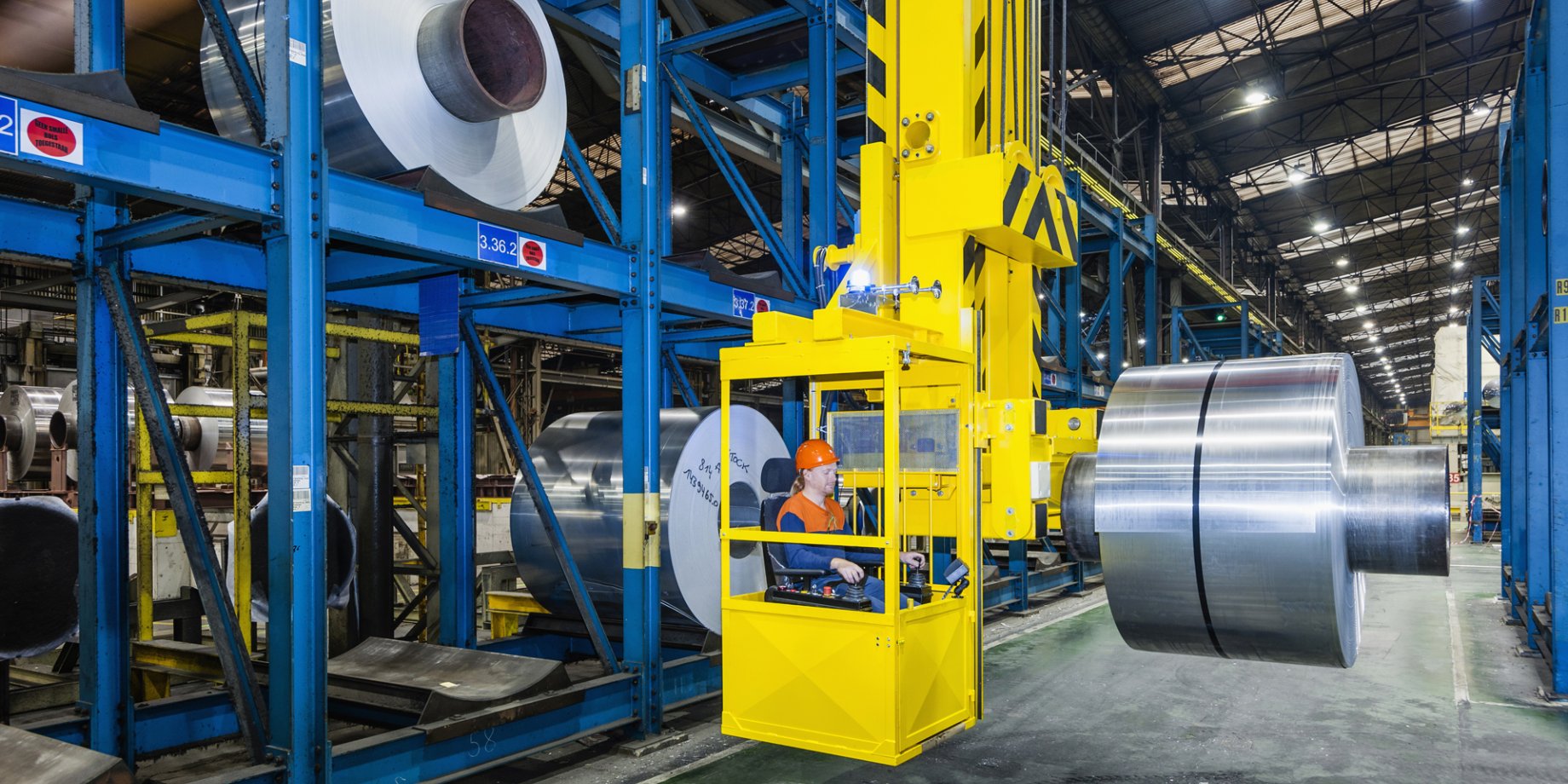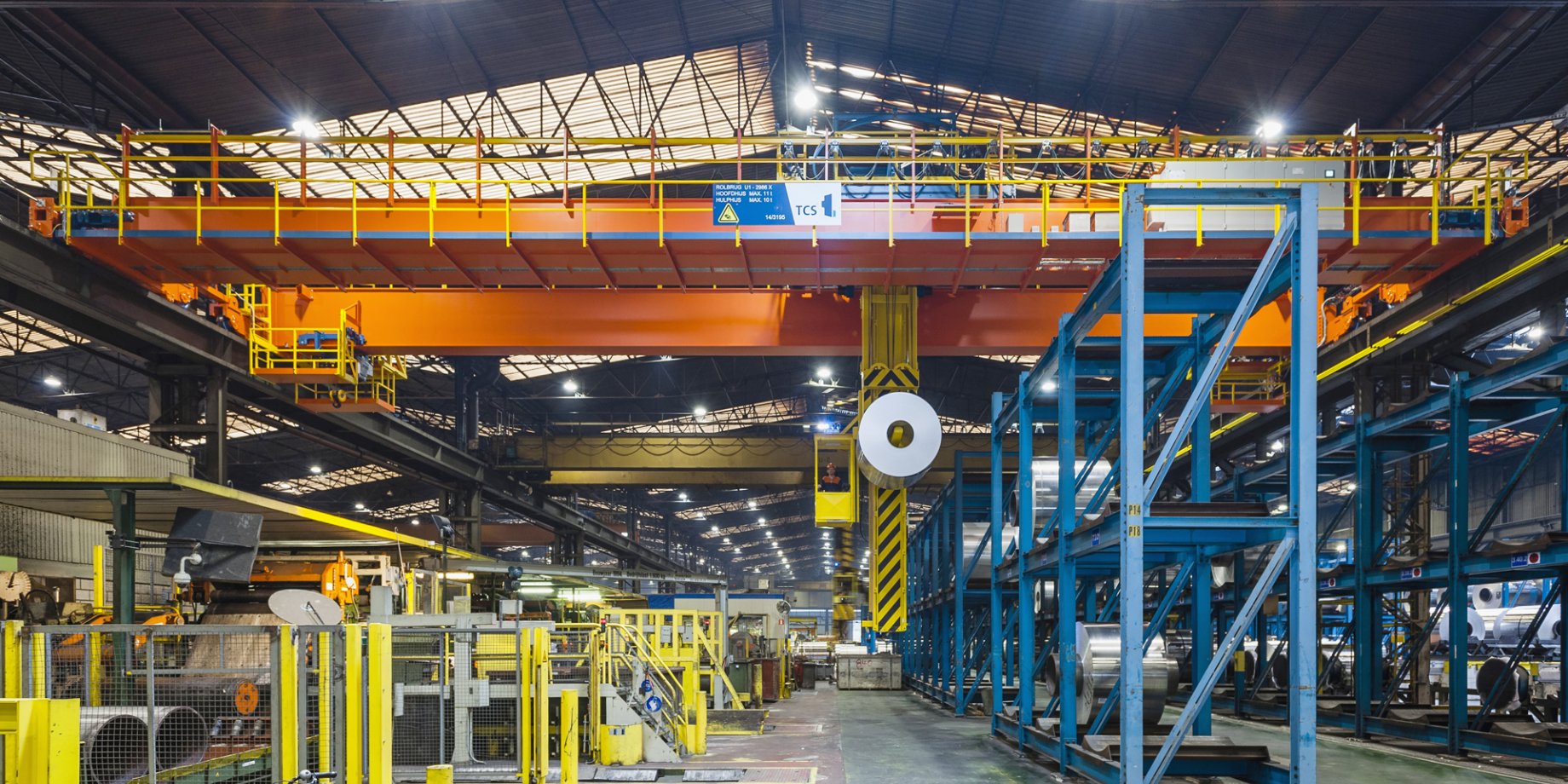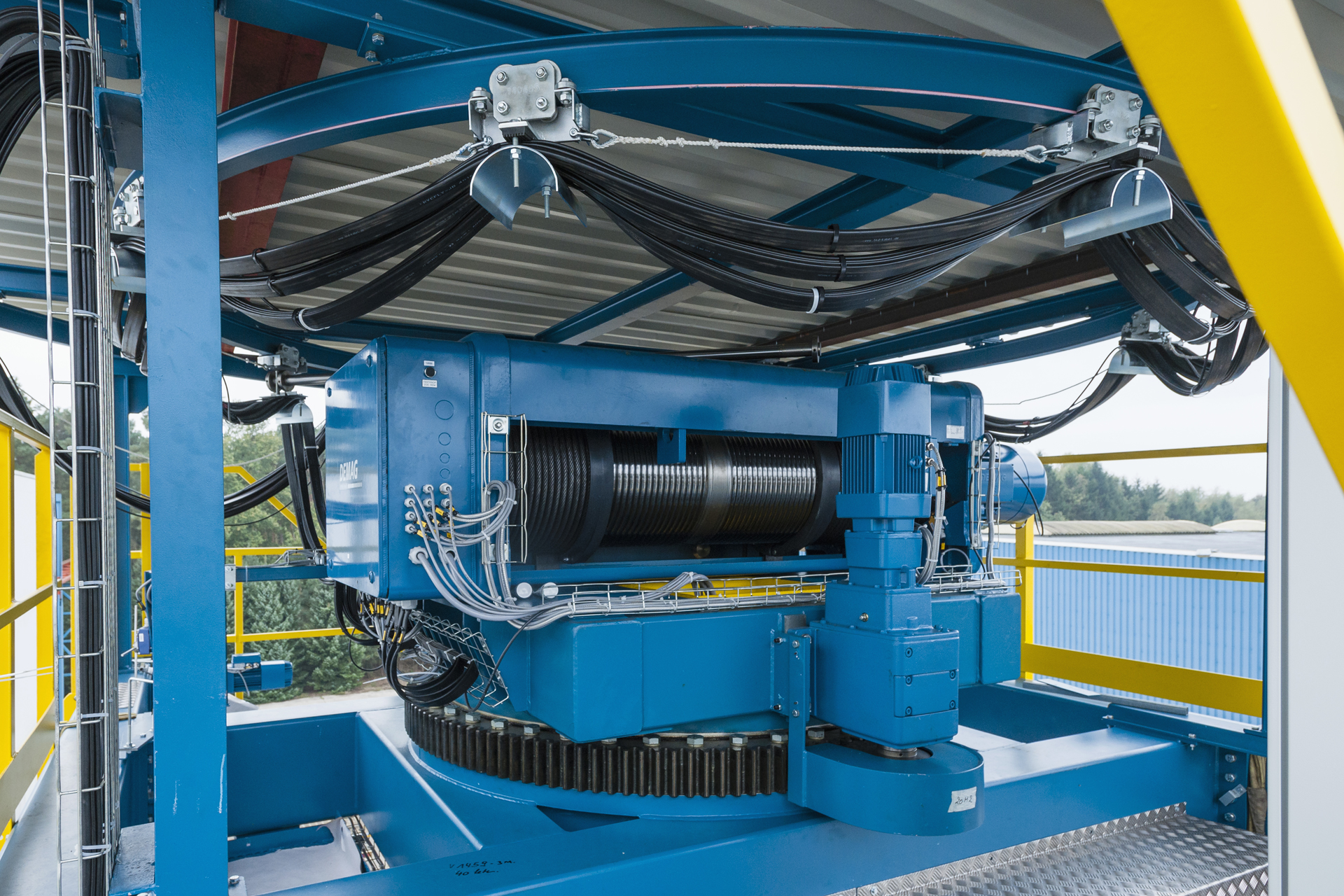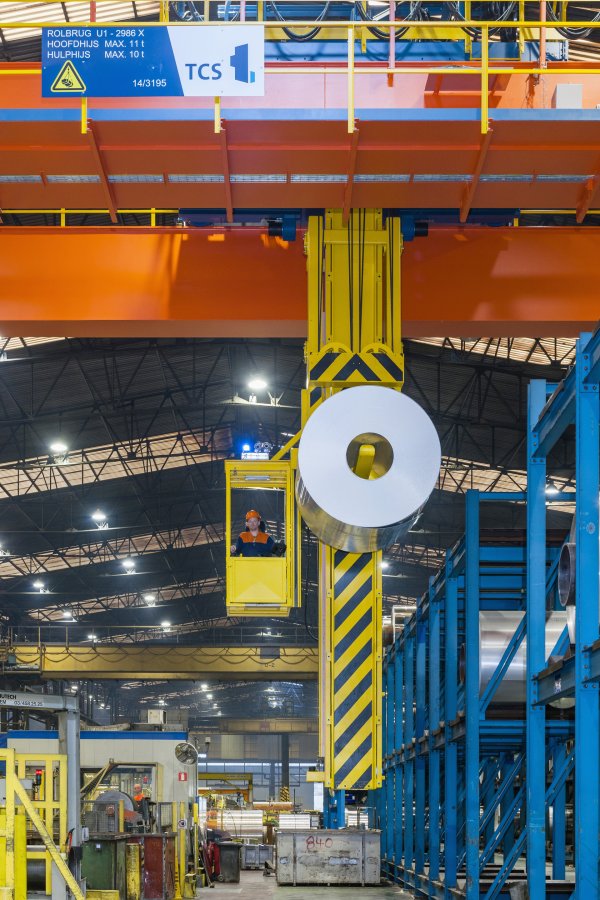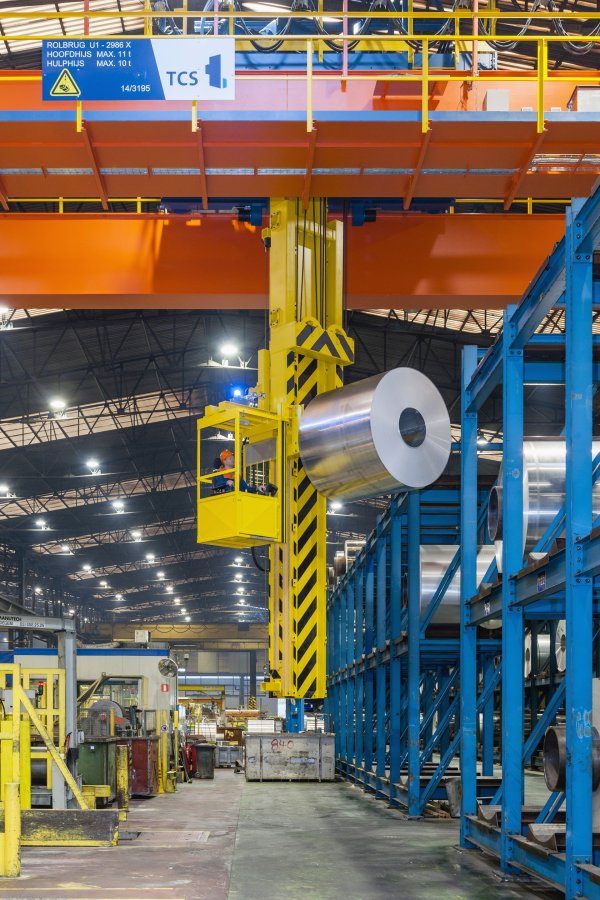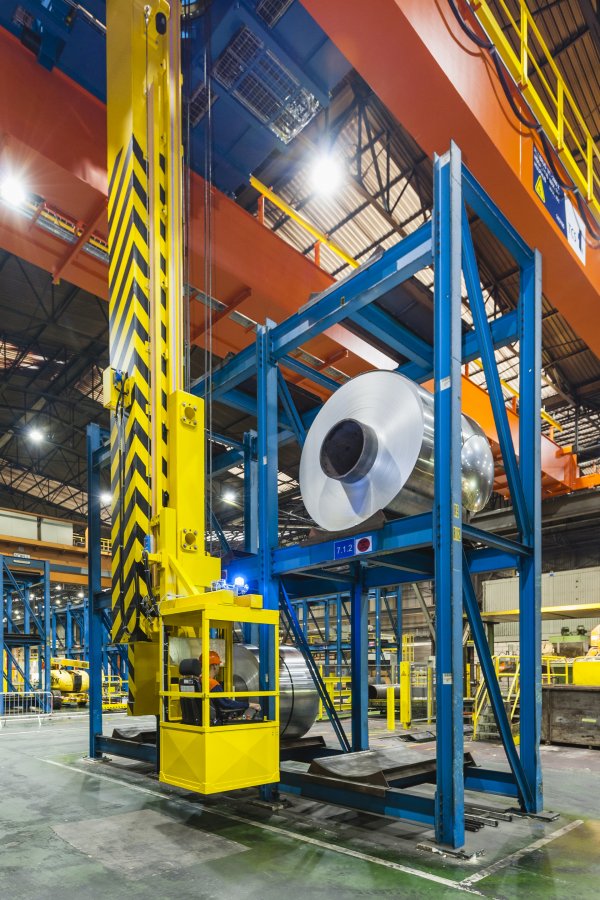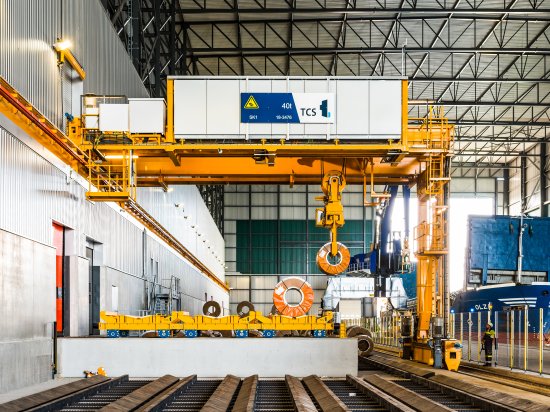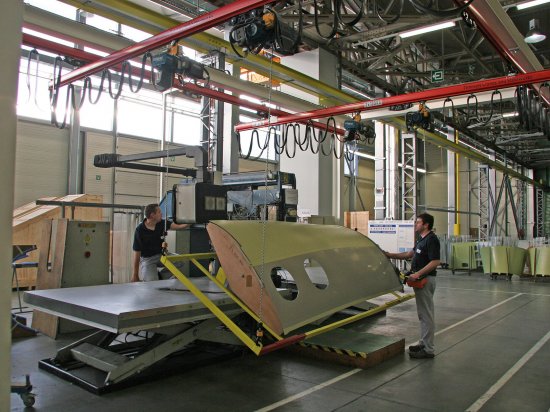A near-replica to avoid reorganisation costs
Rather than ordering a standard coil manipulator crane, Aleris decided to order a custom-made near-replica. “That was the smartest option for us,” Vluymans says. “The crane was perfectly integrated into the flow of activities at our workshop. Any standard coil crane would have been very different and would have forced us to reorganise our activities, leading to additional costs. So, we wanted the new crane to have compatible dimensions and exactly the same coil carrying bolt and control cabin geometry. There would be the additional advantage that the old crane could be set aside as a spare.”
Extra features and a smaller dead load
“Of course, the crane needed to be equipped with modern frequency control to enable a smoother motion,” Vluymans adds. “And most importantly, the new crane’s own weight could not be allowed to exceed that of the old one, as the supporting structure was not strong enough to carry a higher load.”
The latter requirement proved crucial in granting the commission to TCS. “They managed to design a crane with a significantly smaller dead load than our old crane,” Vluymans confirms. “They also proposed to substitute the open winch by a standard Demag hoist. Their smart design allowed them to economise on material costs, so they definitely offered the most favourable solution. In addition, they worked very efficiently. Installation was done in one week, without us needing to interrupt activities.”
